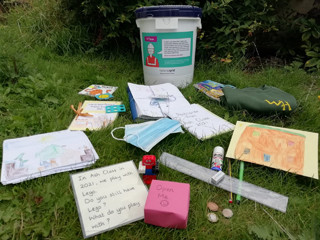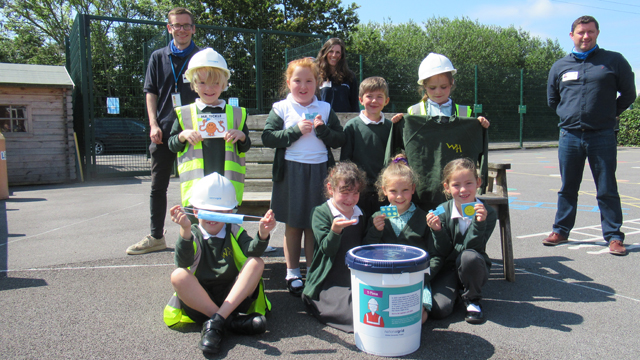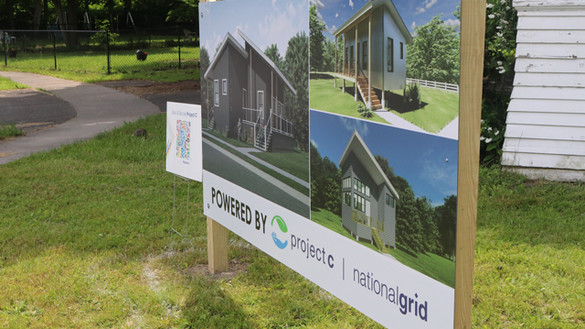

70 years from now, T-pylon time capsules will reveal what our lives were like
As the world’s first operational T-pylons are constructed along National Grid’s Hinkley Connection route, pupils from 20 local schools are preparing time capsules with 2021-related memorabilia to be hidden inside the structures.
Construction of the futuristic new pylons is taking place from September and, as their operational life is expected to be up to 70-80 years, the idea behind the time capsules is that they’ll be discovered by the people who remove or replace the pylons in 2091 or beyond.
What is a T-pylon?
The T-pylon is the first new design for UK electricity pylons in over 100 years.
The winning T-shaped pylon comes from Danish firm Bystrup. It's about 50 ft shorter than the traditional steel lattice structure, but can still transmit 400,000 volts.
This new shorter, sleeker pylon design was chosen from 250 entries in an international competition, organised by National Grid, the UK Government and the Royal Institute of British Architects in 2011.
Facts about T-pylons
|

What’s in the time capsules?
Among the items sealed away to be unearthed years from now are Lego figures, class photographs, video messages and school uniforms. And, of course, no memory of 2021 would be complete without COVID-19 face masks and lateral flow tests.
Alongside these are the children’s ideas about how we will use energy in 2091, as well as designs for houses of the future.
Inspiring future generations in the local community
Children from 20 schools close to the Hinkley Connection route were invited to take part, with Woolavington Village Primary School, East Brent CofE Academy and East and West Huntspill Academy among the first to present their completed capsules to National Grid engineers.
Joanne Brayley, Head of School at East Brent CofE Academy, said: “The project really captured our children’s interest. Our children loved getting involved, imagining what life might be like in 70 years’ time and deciding on what to share with future generations. Our children also loved learning about the new T-pylons and why we need them, as well as where energy is produced and how it gets to homes.”
The Hinkley Connection route – a key part of the transition to net zero
When completed in 2026, the route will connect low-carbon energy from EDF’s Hinkley Point C power station to six million UK homes and businesses. It will also allow for more capacity on the network for renewable energy from the South West peninsula.
James Goode, Project Director for National Grid’s Hinkley Connection Project, said: “The Hinkley Connection Project is not only vital infrastructure and a key part of the transition to net zero, but it will hopefully inspire the next generation of engineers too.”


